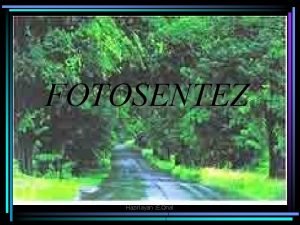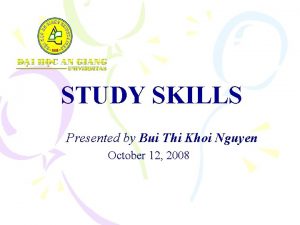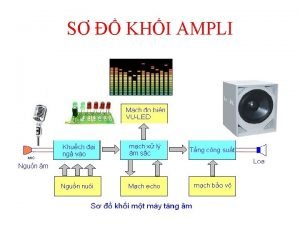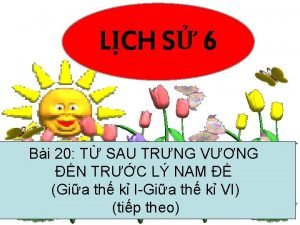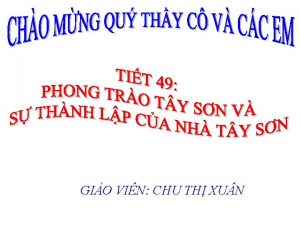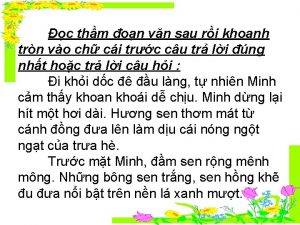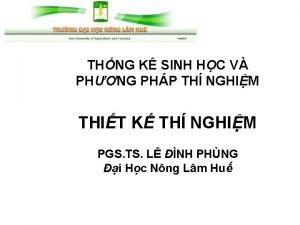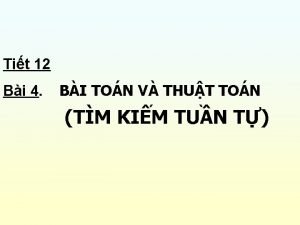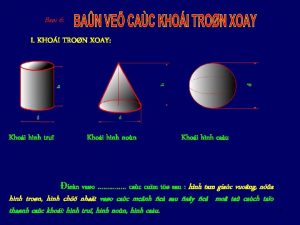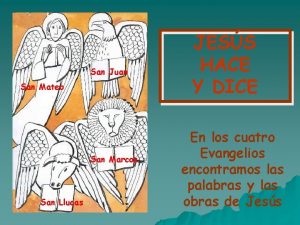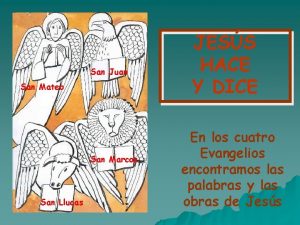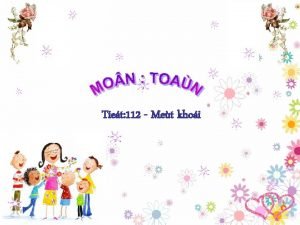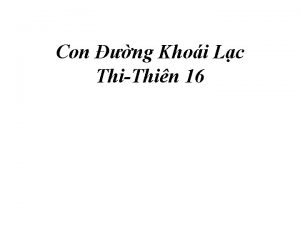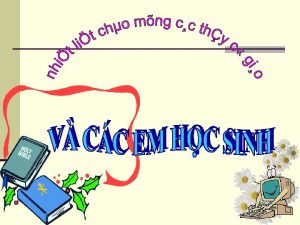onal Khoi San Council NKSC Presentation to Portfolio

















- Slides: 17

onal Khoi & San Council (NKSC) Presentation to Portfolio Committee on Co-operative Governance and Traditional Affairs Parliament of South Africa Cape Town 2 March 2016 Chairperson, Mr. Cecil le Fleur

Who is the National Khoi & San Council (NKSC)? Its an adhoc negotiating forum body formed during 1999 Initiated by former President Nelson Mandela It comprises the five historical Khoi and San communities that existed for thousands of years in South Africa as vetted in the official government reports called the Status Quo reports. The five main groupings are: (i) San (ii) Griqua (iii) Nama (iv) Cape Khoi (v) Koranna Each of the five main communities have their subgroupings who are represented also on the NKSC. The NKC for 17 years comprised these vetted communities through the Status quo reports. X 3 years ago membership to the NKC were extended to include representatives from the revivalists movement and other Khoisan communities who did not feel represented by the NKC. Membership to the NKC was then extended from 22 member to 30 members up to today.

Some of the Geographical areas represented by the National Khoi & San Council q q Kranshoek, Plettenberg bay Vredendal, q Cape town/Cape flats, q Ricthersveld, q Bloemfontein, q Upington, Steinkopf Kalahari Port Elizabeth and other parts of Eastern Cape Goerge Oudtshoorn q Kwazulu Natal Montagu q Johannesburg Mosselbay q Platfontein, Kimberley Knysna q Paarl Overberg region q Worcester Genadendal

Former President Nelson Mandela’s role in the formation of the NKSC The lack of a formal structure to serve as a mouthpiece between the late president and the Khoi-San peoples, urge President Mandela to commission, then dept of Justice, to establish the National Khoi-San Council in 1999 in Upington. The mandate given to this body was to negotiate the constitutional accommodation of the khoi-San Peoples within the different spheres of Government. This development was preceded by a meeting called by the president at his official residence, Genadendal. At that occasion he met with key leaders to discuss the needs and shortfalls of the Khoi and San peoples in post Apartheid South Africa. He also asked us to draw up a memorandum to highlight our concerns in that regard

Aims of the NKSC: Developed in their Community Protocol To join our fellow African leaders and communities in the recognized legislative framework as set out in the Traditional and Khoisan Leadership bill Ensure the recognition of our associated Traditional Knowledge to certain indigenous biological resources Advocates for the developmental and human rights concerns of the Khoi and San communities. Ensure the Khoisan languages becomes official languages Address the historical land issues of the Khoisan

Community consultations: Community Protocol NKC supported by Natural Justice consulted with the following communities around their community priorities. The following areas were visited during 2014: Kalahari, Oudtshoorn, Cape flats, Upington, Platfontein- Kimberley Communities confirmed these priority areas of the NKSC

Situation of the Khoi & San people in South Africa UN Special Rapporteur on Indigenous Peoples (2005) Report: • Official visit paid to South Africa by the Special Rapporteur on the situation of human rights and fundamental freedoms of indigenous people from 28 July to 8 August 2005, at the invitation of the Government of South Africa. • To this day, South Africa is dealing with the legacy of the racist apartheid policy, under which all indigenous peoples of South Africa were oppressed and discriminated against. The indigenous Khoi-San were dispossessed of their lands and territories and their communities and cultures were destroyed. • The tragic consequences of apartheid cannot be overcome in a few years, and the Special Rapporteur is fully conscious of the tremendous efforts that have been made by the democratic Government of South Africa to redress the many injustices inherited from the old regime.

Situation of the Khoi & San people in South Africa Although indigenous peoples are still not officially recognized as such and official statistics do not reflect their presence in South Africa, the 1996 Constitution included a reference to Khoe and San people. In November 2004, the Government Cabinet adopted a memorandum that would lead to an official policy on recognizing “vulnerable indigenous communities”. The Special Rapporteur is encouraged by the Government’s declared commitment to meet the demands of the indigenous groups in the country and by the ongoing efforts to formulate and implement appropriate legislation and policies to address issues such as land restitution, multilingual and multicultural education, the representation of traditional authorities in public life and the delivery of health and other services. Government authorities are aware of the urgency to focus on the accumulated backlog of unsatisfied needs of indigenous communities. Indigenous people in South Africa have in principle equal access to all social services provided by the Government, including education, health delivery systems and infrastructure. However, they tend to be more marginalized than other sectors to the extent that they are concentrated at the lower end of the socio-economic scale. All indigenous groups face different challenges within the national society as a result of distinct historical processes and current circumstances The Khomani San in the Kalahari were dispossessed of their lands and lost their traditional hunter-gatherer livelihood in the process. Today they are probably among the poorest and most marginalized indigenous communities in the country and their situation requires priority attention. The Griqua communities of the Western and Northern Cape, who are also present in other parts of the country, have long struggled politically for the recognition of their lost cultural identity as part of the Khoi-San people. Having been included during the apartheid regime in the amorphous category of “Coloureds”, they demand statutory recognition as a distinct indigenous community and respect for their particular ethnic identity.

Situation of the Khoi & San people in South Africa The Special Rapporteur recommends, inter alia, that indigenous communities be recognized as such constitutionally and that the legal institutions maintaining the stigma of their classification as “Coloureds” by the apartheid regime be removed. The Government is advised to maintain a national register of officially recognized indigenous communities, and to give statutory recognition to their associations and chieftaincies wherever relevant. The Special Rapporteur further recommends that the restitution of land claims by indigenous communities not be limited to the cut-off date of 1913; the launching of a systematic land needs and land rights study of indigenous communities; and the acceleration of the land restitution process. The Government must also provide indigenous communities with the resources and technical cooperation to pursue these claims successfully. He also recommends the use of economic, social and human development indicators for indigenous peoples, and the improvement of access of indigenous persons and communities to the justice system through the establishment of visiting circuit courts in outlying areas. i

African Commission on Human & Peoples Rights position on IPs in Africa: A more than two years research led by the Commission conceptualises the term, giving it a human rights-based meaning that takes into account the specificities and realities of the African continent. According to this research, in post-colonial Africa, the term ‘indigenous peoples’ does not mean: - first habitants in a country or on the continent; It rather refers to those communities in Africa: who identify themselves as indigenous and who’s not accessing their human rights in conformity with their broader African communities.

NATIONAL KHOI & SAN COUNCIL’s analyses of importance of the Traditional & Khoi-San Council Bill 2015 We support the creation of a law that recognizes African customary communities institutions and leadership. We also believe that African customary institutions and its leadership should be compliant with the democratic principles of our Constitution of 1996 We therefore believe that the Bill is important and has a place in post apartheid South Africa. We also believe its in line with the African policy frameworks of the African Commission on Human and Peoples Rights

National Khoi-San Council formula for the successful collective existence of African communities which includes Khoi-San Based on the UN Declaration on the Rights of Indigenous Peoples and the African Commission’s Report on the issue of indigenous peoples. If we are to survive and thrive as a customary community based on our collective values. It needs the following three key foundations: (i) Land (ii) Geographical jurisdiction over our territories (iii) Hierarchical leadership

Nama, Griquas & San, including, Griqua National Conference of SA Paramount Chief Traditional Council Kranshoek, Headquarter Branch 2 Branch 3 Branch 1 Branch 4

Threats to the GNC collective existence: Biggest threat : Not having ownership over traditional lands with the necessary geographical authority. This impacts on: q Collective survival as an African cultural community q Cultural identity q Cultural heritage q Language q Education q Intergenerational transfer of knowledge

2) Chapter 2, Section 5(1)(a): Criteria for recognition of Khoi-San community A community may, subject to paragraph (b), apply to the Premier concerned to be recognized as a Khoi-San community if it— (i) has a history of self-identification by members of the community concerned, as belonging to a unique community distinct from all other communities; (ii) observes distinctive established Khoi-San customary law and customs; (iii) is subject to a system of hereditary or elected Khoi-San leadership with structures exercising authority in terms of customary law and customs of that community; (iv) has an existence of distinctive cultural heritage manifestations; (v) has a proven history of coherent existence of the community from a particular point in time up to the present; and (vi) occupies a specific geographical area or various geographical areas together with other noncommunity members

Khoi-San community criteria: continues Forcibly labelled Coloured - Deep disruption to their cultural institutions, way of life and values Current criteria = penalizes the Khoisan for having been forcibly labelled Coloured - It fails to take in consideration the unique and violent nature apartheid was on also the Khoisan with being forcibly labelled Coloured - Criteria should reflect the historical trajectory of the Khoisan community within the South African historical context. The apartheid system outlawed their culture and forced them into becoming labourers and farm workers. How does the criteria consider this. Resulted in their cultural myth as Carl Jung points out, being deeply disrupted for the most part, through being labelled Coloured (with the exception of a few Khoisan communities). Result of living without myth/history= x 18 prisons in Western Cape, Coloured community comprises at least 60% of prison populations in all x 18 prisons

Recommendations ito the Traditional & Khoisan Leadership bill (2015): The NKSC supports the bill in its current form and also supports good governance and the principles of human rights as outlined in our Constitution We wish to congratulate our democratic government for the first forms of official recognition the Khoisan are receiving through this bill. Discuss the criteria as outlined by Natural Justice.
 Www.biyolojiportali.com
Www.biyolojiportali.com Salih emre önal cümle türleri
Salih emre önal cümle türleri Osman ulubaş anadolu lisesi
Osman ulubaş anadolu lisesi Ergün önal biyoloji öğretmeni
Ergün önal biyoloji öğretmeni Ergün önal biyoloji öğretmeni
Ergün önal biyoloji öğretmeni 1985 türkiye güzeli
1985 türkiye güzeli Type of portfolio
Type of portfolio Nguyen tan khoi nguyen
Nguyen tan khoi nguyen Sơ đồ khối ampli
Sơ đồ khối ampli Cuộc khởi nghĩa của bà triệu
Cuộc khởi nghĩa của bà triệu Khối lượng thuốc nổ lựu đạn lđ-01 vn
Khối lượng thuốc nổ lựu đạn lđ-01 vn Khởi nghĩa chàng lía nổ ra ở đâu
Khởi nghĩa chàng lía nổ ra ở đâu đi khỏi dốc đê đầu làng
đi khỏi dốc đê đầu làng Ngày mười tám trận chi lăng
Ngày mười tám trận chi lăng Các kiểu bố trí thí nghiệm 1 nhân tố
Các kiểu bố trí thí nghiệm 1 nhân tố Kim tự tháp là một khối đa diện chụp hình
Kim tự tháp là một khối đa diện chụp hình Thuật toán tìm kiếm tuần tự kết thúc khi nào
Thuật toán tìm kiếm tuần tự kết thúc khi nào Anh cút ra khỏi nhà tôi ngay nói giảm nói tránh
Anh cút ra khỏi nhà tôi ngay nói giảm nói tránh



